Knock Nevis is the largest vessel in the world
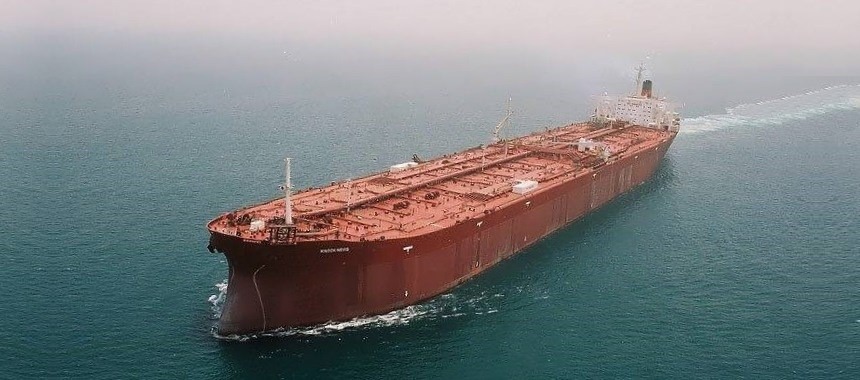
Oil has long become the most sensitive nerve of the global industry. Often, «black gold» is most profitably transported by water, rather than by land. The route taken by vessels of this type is called the «oil route.» As early as the 19th century, when coal was the primary raw material, crude oil was transported in wooden and zinc barrels in the holds of specialized sailing ships designed for oil transportation.
The oldest sea tanker for oil transportation, where the hull served as the tank's walls, was the sailing ship «Atlantic,» built in 1863. In this tanker, the hull was used as the reservoir for liquid cargo and has survived to this day. By the beginning of World War I, maritime tankers already constituted 3% of the world's merchant fleet.
Every year, the demand for oil is increasing. This process is associated with the continuous development of heavy industry and the growth of vehicles with internal combustion engines. Consequently, the scale of oil extraction is expanding, and the requirements for its transportation are becoming more stringent. I doubt that there are ships whose size and displacement have the same rapid development trend as tankers.
The development of oil tanker shipbuilding takes into account the characteristics and advantages of supertankers, as the transportation costs of oil on a maritime vessel that can carry over 100,000 tons of oil are only slightly higher than using a tanker with a capacity of 16,000 tons. Today, large tankers and supertankers are fully automated and serviced by relatively small crews. Even the longest transportation of valuable cargo costs significantly less than operating a conventional vessel. One such example is the «Knock Nevis.»
The history of this maritime vessel began in Japan in 1976 (some sources mention 1975) at the shipyards of Sumitomo Heavy Industries. At that time, the oil tanker «Knock Nevis» was born with the modest serial number 1016 and was not as large. Soon, the cargo ship was sold to a Greek owner, who gave the oil tanker its first real name — «Seawise Giant.» Its carrying capacity was 480,000 tons (typical modern oil tankers accommodate 280,000 tons). Three years later, the cargo ship was sold to a new owner who ordered its enlargement. Japanese shipbuilders conducted the conversion of the tanker, which took a considerable amount of time. Finally, in 1981, the supertanker was ready for operation. Additional sections of the hull increased its tonnage to 564,763 tons, and the length of the hull was 458 meters.
The supertanker «Knock Nevis» could easily accommodate the Empire State Building and the Eiffel Tower on its deck. However, its cargo — oil worth $195 million. This enormous vessel has undergone several changes of ownership and bears its fourth name, «Knock Nevis.» It has been targeted by missiles and cut in half. Yet, for over 20 years, it remains the largest ship in the world. Throughout its life, the supertanker has changed hands multiple times and has undergone several name changes.
Supertanker «Seawise Giant»:
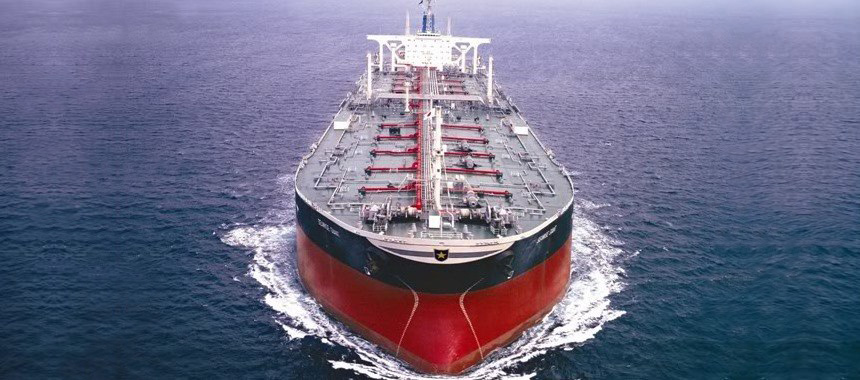 The super tanker Seawise Giant during sea trials
The super tanker Seawise Giant during sea trials
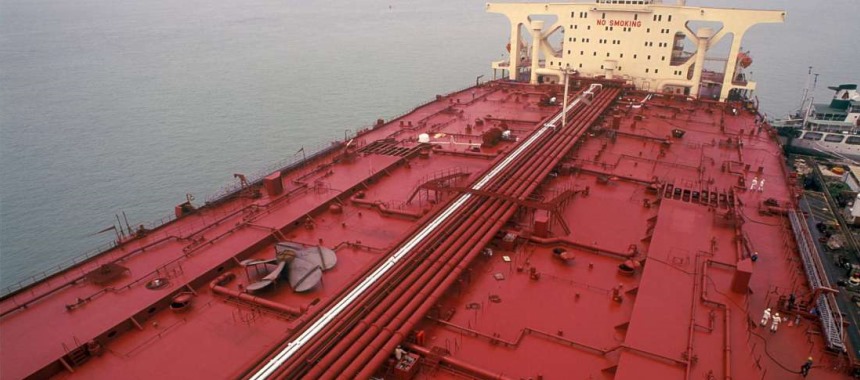 Please note the size of the propeller and the people standing on the upper deck
Please note the size of the propeller and the people standing on the upper deck
Supertanker «Jahre Viking»:
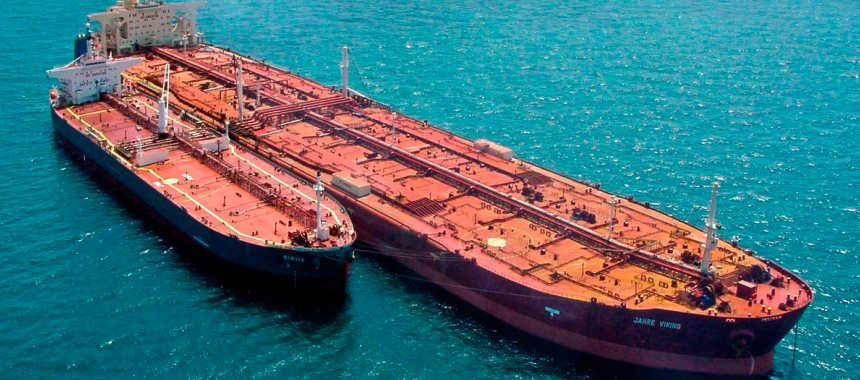 Supertanker Jahre Viking
Supertanker Jahre Viking
Supertanker «Knock Nevis»:
In 2008, the supertanker visited a dry dock at a shipyard in Dubai, where it received new equipment and was converted into a Floating Storage Offloading unit. During this process, the cargo vessel was renamed «Knock Nevis».
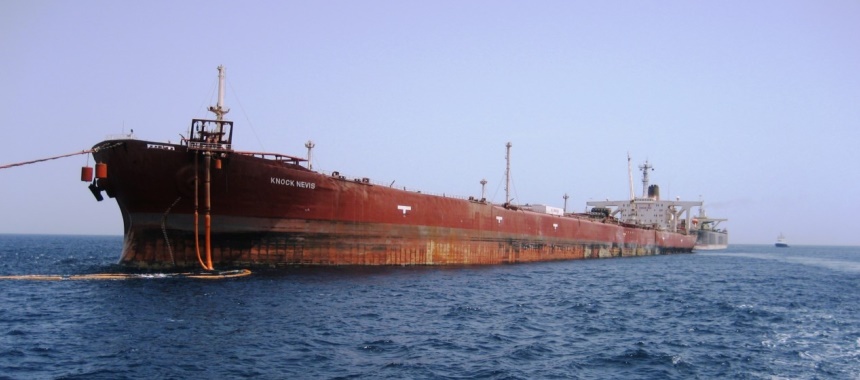 Supertanker Knock Nevis
Supertanker Knock Nevis
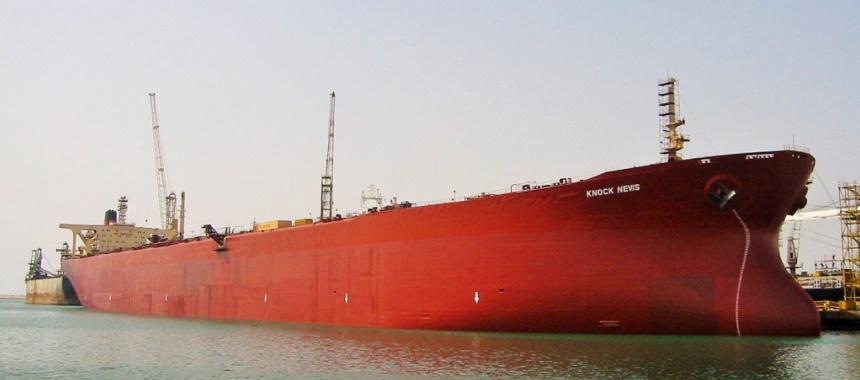 Floating storage facility Knock Nevis
Floating storage facility Knock Nevis
Dismantling of the supertanker «Mont»:
After a long service, the legendary supertanker «Mont» was sent for recycling at the port of Alang. Under the new name «Mont,» the ocean giant embarked on its final journey, and in late December 2009, permission was granted for its disposal.
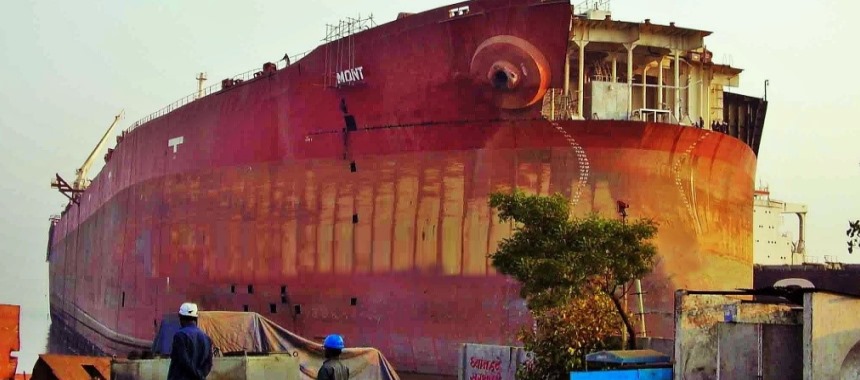 Supertanker Mont
Supertanker Mont
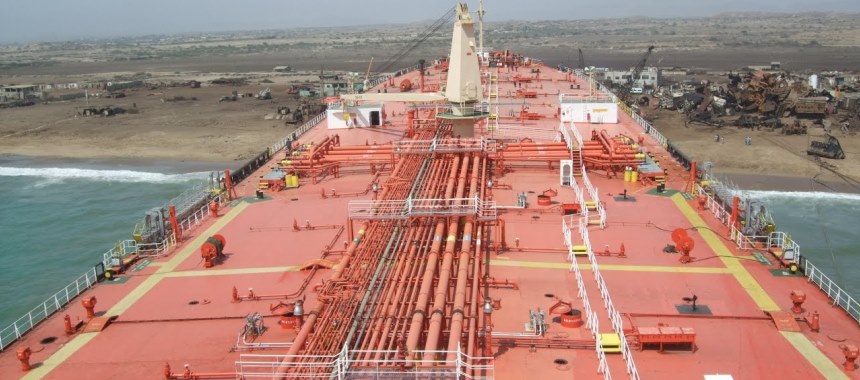 The supertanker Mont arrived for dismantling in Alang
The supertanker Mont arrived for dismantling in Alang
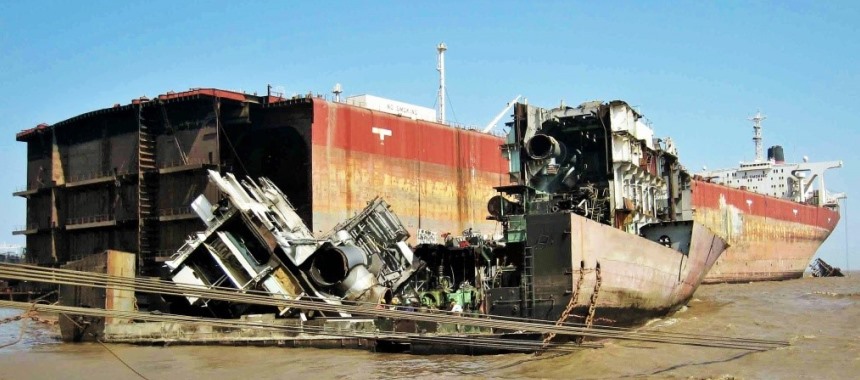 The giant tanker Knock Nevis has been destroyed
The giant tanker Knock Nevis has been destroyed
Technical specifications of the oil tanker «Knock Nevis»:
- Designed tonnage — 260,581 tons
- Deadweight tonnage — 564,763 tons
- Length — 458.4 m
- Width — 68.8 m
- Draft (full) — 24.6 m
- Propulsion system — steam turbines
- Power — 50,000 horsepower
- Speed — 13 knots
- Crew — 40 people.
However, the increase in deadweight also has a negative side: due to their excessive draft, supertankers are prohibited from entering certain seas, passing through straits and canals, significantly limiting their capabilities.
Typically, oil loading takes place at anchorages in oil terminals using pipelines or lighters. To reduce viscosity and facilitate the unloading process between tanks, heated pipelines are installed.
Oil poses a serious threat to the marine environment. In 1973, the International Maritime Organization adopted a convention that defined the design requirements for all types of tankers. Individual cargo capacities of oil tankers should not exceed 30,000 cubic meters, and tankers must have double hulls and technical devices to enhance the vessel's manoeuvrability.
- Comments
 en
en ru
ru uk
uk




